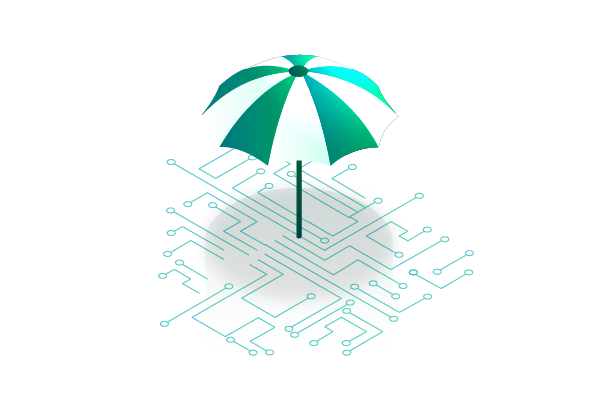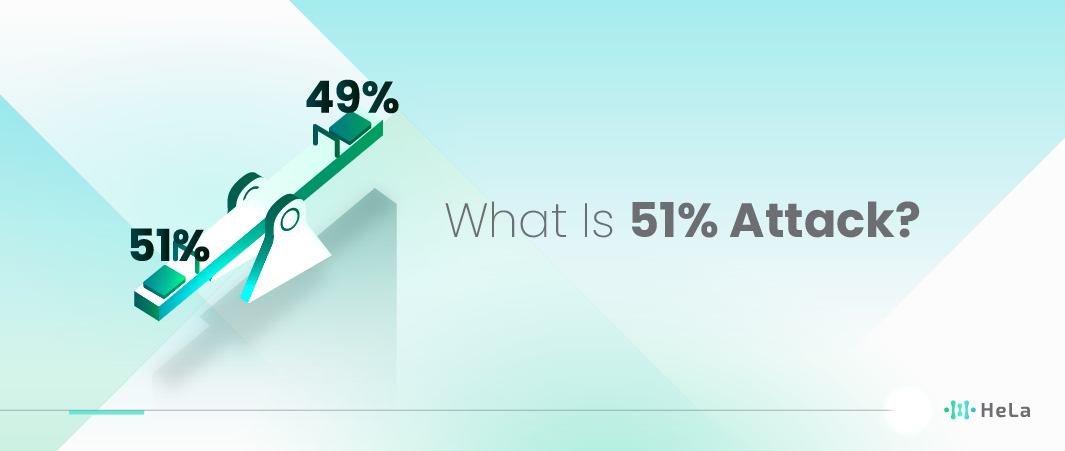In the rapidly evolving realm of cryptocurrency and blockchain technology, security stands as a paramount concern. Among various threats, a 51% attack poses a significant risk to the integrity and trustworthiness of blockchain networks. But what exactly is a 51% attack? This article aims to demystify this concept, presenting a clear, detailed understanding of how such attacks occur, their potential impact, and the costs they incur, not only in financial terms but also in terms of trust and security.
A 51% attack, sometimes referred to as a majority attack, happens when a single entity or group gains control of more than 50% of a blockchain network’s mining power, hash rate, or computing power. This majority control allows the attacker to manipulate the network in various detrimental ways. As we delve deeper into this topic, it becomes clear why understanding such attacks is crucial for anyone involved in the blockchain space, be it investors, developers, or everyday users.
The notion of a 51% attack is not just a theoretical concern; it’s a tangible threat that has manifested in the real world, affecting various cryptocurrencies and shaking the trust in decentralized systems. Through this article, we aim to navigate the complex landscape of 51% attacks, providing a comprehensive overview that encompasses the risks involved, real-world examples that shed light on the severity of the issue, and an analysis of the costs associated with such cyber threats.
What Is a 51% Attack ?

A 51% attack is a potential vulnerability in the blockchain network where a single entity or group gains control of the majority (more than 50%) of the network’s mining power or hash rate. This control undermines the fundamental security and decentralized nature of blockchain technology, where no single party is supposed to have enough power to unilaterally make changes to the blockchain.
The mechanics of a 51% attack involve the following key actions:
- Gaining Majority Control: The attacker must amass more than 50% of the network’s computational power. In the context of blockchain, this often means controlling a majority of the mining operations that validate and add new transactions to the blockchain. This can be particularly challenging in large, well-established networks like Bitcoin but might be more feasible in smaller, less secure networks.
- Halting Transactions: With majority control, the attackers can prevent certain transactions from being confirmed by the network. This means they can stop the transactions from being added to the blockchain, effectively freezing the movement of currency between users or towards specific addresses.
Also Read: What is Remix IDE? An Introduction to Ethereum Development
- Double Spending: Perhaps the most damaging aspect of a 51% attack is the ability to reverse transactions. An attacker can make a transaction, receive goods or services, and then, by leveraging their majority control, reorganize the blockchain to exclude their initial transaction. This allows them to spend the same coins twice – a phenomenon known as double spending.
- Limitations: Despite these significant powers, attackers in a 51% attack scenario cannot alter the blockchain’s history at will or create new coins out of thin air. Their influence is primarily over the recent transactions, usually those not yet fully confirmed or embedded deep into the blockchain’s history.
The threat of a 51% attack highlights the importance of decentralization and security in blockchain networks. As the network grows and becomes more distributed, the resources required to achieve such an attack become prohibitively large, making well-established blockchains like Bitcoin and Ethereum more resilient to these attacks. However, smaller, less secure networks remain vulnerable, underscoring the need for ongoing improvements in blockchain security measures.
The Risks Associated with 51% Attacks
A 51% attack occurs when a single entity or group gains control of more than 50% of a blockchain network’s mining power, enabling them to manipulate the network in various harmful ways. Beyond undermining trust and introducing double-spending problems, these attacks can also have several other critical implications:
Centralization Risks
One of the core principles of blockchain technology is decentralization, which aims to eliminate single points of failure and distribute control among many participants. A 51% attack represents a significant centralization risk, contradicting this principle. It highlights the potential for power to be concentrated in the hands of a few, thereby making the network vulnerable to censorship, manipulation, and control by the attackers.
Security and Integrity
The integrity of a blockchain is paramount. A 51% attack compromises the security and integrity of the network, as the attackers can reject valid transactions, prevent new transactions from being confirmed, or reverse transactions while they maintain control. This capability not only affects financial transactions but can also disrupt any application that relies on the blockchain for secure, immutable data records.
Impact on Network Growth and Innovation
The fear of potential 51% attacks can stifle innovation and deter new participants from joining the network. Developers and enterprises may hesitate to build on a platform that could be compromised, slowing down the growth and adoption of blockchain technology. Moreover, the resources required to defend against such attacks could divert attention and funding away from developmental efforts.
Regulatory and Legal Implications
The occurrence of a 51% attack could lead to increased regulatory scrutiny for the affected blockchain and cryptocurrencies in general. Governments and regulatory bodies might impose stricter regulations on the operation and security of blockchain networks, potentially affecting their global adoption and innovation. Additionally, victims of such attacks could seek legal recourse, leading to complex legal battles that could further damage the reputation and viability of the technology.
Long-term Reputational Damage
Beyond immediate financial and operational impacts, a successful 51% attack can inflict long-term reputational damage on the affected blockchain. Restoring confidence among users, developers, and investors after such an incident is challenging and time-consuming. The shadow of the attack can linger, making it difficult for the network to recover its value and for the ecosystem to attract new projects and investments.
While 51% attacks highlight the technical vulnerabilities of certain blockchain configurations, they also underscore the importance of ongoing research, development, and community engagement in enhancing the security, resilience, and decentralization of blockchain networks.
Real-World Examples of 51% Attacks

A 51% attack refers to a potential attack on a blockchain network where a single entity or group of entities gain control of more than 50% of the network’s mining power, hash rate, or stake, depending on the consensus mechanism in use. This majority control enables the attackers to manipulate the network in malicious ways, such as double-spending coins, preventing new transactions from gaining confirmations, and disrupting the mining operations of others. The name “51% attack” underscores the tipping point at which such control becomes feasible and threatening to the integrity of the blockchain.
Ethereum Classic and Bitcoin Gold are two prominent examples of cryptocurrencies that have been targets of 51% attacks, illustrating the practical risks associated with decentralized network security.
Ethereum Classic (ETC) Attacks
Ethereum Classic emerged from a hard fork of the Ethereum blockchain following a divisive disagreement over how to handle the aftermath of a major hack (the DAO hack). The attacks on Ethereum Classic highlight the vulnerabilities even well-established cryptocurrencies face against coordinated attacks.
Over the years, Ethereum Classic has suffered several 51% attacks, most notably in 2019 and again in 2020, where attackers successfully reorganized the blockchain and double-spent ETC worth millions of dollars. These incidents not only caused significant financial losses but also sparked a debate about the security and resilience of proof-of-work (PoW) blockchains that do not command the same hashing power as their larger counterparts, like Ethereum.
Bitcoin Gold (BTG) Attack
Bitcoin Gold, a fork of Bitcoin created with the intent of making Bitcoin decentralized again by enabling GPU mining, was another victim of a 51% attack. In 2018, attackers were able to gain control of a significant portion of the network’s hash rate, allowing them to double-spend BTG tokens worth hundreds of thousands of dollars. This attack underscored the vulnerabilities present in smaller PoW networks, where achieving a majority hash rate is less costly and thus more feasible for attackers.
Implications and Responses
These attacks serve as critical case studies in the blockchain community, demonstrating the inherent risks of centralized power within decentralized systems. They prompt ongoing discussions about the security of various consensus mechanisms, the trade-offs between decentralization, security, and scalability, and the importance of diversifying consensus participants to mitigate the risk of such attacks.
In response to these vulnerabilities, some networks have considered or implemented changes to their consensus mechanisms, such as moving from PoW to proof-of-stake (PoS), which inherently discourages 51% attacks by making them economically impractical. Additionally, the incidents have led to increased efforts in developing and deploying more sophisticated monitoring tools and security measures to detect and prevent potential attacks before they can cause harm.
The lessons learned from 51% attacks on Ethereum Classic, Bitcoin Gold, and other cryptocurrencies continue to inform the development of more secure, resilient, and decentralized blockchain networks. These incidents highlight the ongoing need for vigilance, innovation, and community collaboration in addressing the complex challenges of blockchain security.
The Cost of a 51% Attack

The cost of launching a 51% attack on a blockchain network varies significantly with the network’s size and security measures, serving as a pivotal aspect of blockchain security. Smaller networks, due to their limited computational power, are more vulnerable as attackers can feasibly acquire enough resources to gain control, threatening the network’s integrity. Conversely, larger networks like Bitcoin pose a formidable challenge for potential attackers due to the immense cost of amassing the required computational power, safeguarding these networks from such attacks.
The repercussions of a 51% attack extend beyond the attacker’s financial cost, affecting the entire blockchain ecosystem. Direct impacts include financial losses from double spending and a decline in the cryptocurrency’s value, which can deter future adoption and undermine the network’s long-term viability. Additionally, the potential reputational damage can erode trust in the targeted blockchain, posing a significant challenge in restoring confidence among users, investors, and the broader public.
Trust is foundational to blockchain technology, and a 51% attack strikingly underscores the critical importance of robust security measures and the network’s computational power in maintaining this trust. Larger, well-established networks have naturally deterred such attacks through their sheer scale and distributed nature, which collectively contribute to their perceived stability and security.
The cost and implications of a 51% attack highlight the nuanced balance between technological resilience and potential vulnerabilities within blockchain networks. Ensuring the security of these networks against such attacks is crucial for maintaining their integrity, trustworthiness, and long-term sustainability, emphasizing the ongoing need for advancements in blockchain security practices.
Mitigating the Risks of 51% Attacks
Mitigating the risks of 51% attacks—a situation where a single entity or group gains control of more than half of a blockchain network’s mining power, allowing them to manipulate transactions and potentially double-spend coins—is critical for maintaining the integrity and trustworthiness of blockchain technologies. To combat these vulnerabilities, several strategies are employed:
- Increasing Network Decentralization: This strategy involves broadening the distribution of mining power across a larger number of participants. By ensuring no single miner or coalition of miners can dominate the network’s hashing power, the blockchain becomes more resistant to 51% attacks. Encouraging more individuals and organizations to participate in the mining process helps achieve this goal.
- Implementing Advanced Consensus Mechanisms: Moving away from Proof of Work (PoW) to more secure consensus mechanisms like Proof of Stake (PoS) is another effective measure. PoS and other alternatives (e.g., Delegated Proof of Stake or DPoS, and Proof of Authority or PoA) make it economically disadvantageous or technically challenging for attackers to amass the necessary control over the network.
Also Read: 10 Best Web3 Libraries to Consider in 2024
- Specific Security Measures: Some blockchains introduce checkpoints within their code to prevent deep reorganizations of the blockchain, making it harder to reverse transactions once they’ve been confirmed beyond a certain point. Delayed block confirmations, requiring more confirmations before a transaction is considered secure, also add an extra layer of security against transaction reversal.
- Continuous Monitoring and Early Detection: Implementing systems to monitor the network for signs of unusual or suspicious mining activity can enable early detection of potential 51% attacks. Such monitoring allows network participants or the blockchain protocol itself to react swiftly, implementing countermeasures to prevent or minimize the attack’s impact.
Each of these strategies can be employed independently or in combination to fortify a blockchain against the threat of a 51% attack, thereby ensuring its operational integrity and the trust of its users.
Conclusion
A 51% attack represents a significant threat to the security and integrity of blockchain networks. Understanding the mechanics, risks, and potential costs of such attacks is essential for anyone involved in the cryptocurrency space. While the threat of a 51% attack cannot be entirely eliminated, through increased network decentralization, advanced consensus mechanisms, and continuous vigilance, the resilience of blockchain technology against such attacks can be significantly enhanced.
The incidents of 51% attacks in various cryptocurrencies serve as a reminder of the constant need for advancement in blockchain security. As the technology continues to evolve, so too must the strategies to protect it. By learning from past incidents and continuously innovating, the blockchain community can aim to safeguard the decentralized principles that lie at the core of this transformative technology.
In conclusion, while the concept of a 51% attack is a daunting aspect of blockchain technology, it is also a catalyst for continuous improvement and innovation in the field. By understanding and addressing the risks associated with these attacks, the blockchain community can strive for a future where the integrity, security, and trust in these decentralized systems are upheld and strengthened.
Disclaimer: The information provided by HeLa Labs in this article is intended for general informational purposes and does not reflect the company’s opinion. It is not intended as investment advice or recommendations. Readers are strongly advised to conduct their own through research and consult with a qualified financial advisor before making any financial decisions.

Joshua Soriano
I am Joshua Soriano, a passionate writer and devoted layer 1 and crypto enthusiast. Armed with a profound grasp of cryptocurrencies, blockchain technology, and layer 1 solutions, I've carved a niche for myself in the crypto community.
-
Joshua Soriano#molongui-disabled-link
-
Joshua Soriano#molongui-disabled-link
-
Joshua Soriano#molongui-disabled-link
-
Joshua Soriano#molongui-disabled-link

